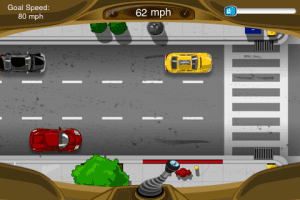Last week, Real Otaku Gamer had the pleasure of talking with John Karnay of Sonic Boom Games about game writing and the development process. This is part two of that amazing interview.
 Chellemo (ROG): Explain how the story writing process works for games. At what stage of the development process is it introduced and how closely do the writers work with other members on the team?
Chellemo (ROG): Explain how the story writing process works for games. At what stage of the development process is it introduced and how closely do the writers work with other members on the team?
John Karnay: The process tends to vary from title to title and company to company. When working for Kabam games as a freelance mission designer and game writer, I was given very specific instructions as to the parameters of each mission I was working on. These parameters were usually laid out by a game designer who had specific art assets available and continuity requirements that needed to be met. I was basically filling in dialogue and back story plot for what might have otherwise been a gopher mission. In these instances, my writing was at the last phase of development. My dialogue and story was going to be translated into a short cut scene or possibly a quest giver’s dialogue that segued into the actual mission content itself. On occasion I was given creative liberties to create new NPC characters and also contribute to the world lore of the game with my writing.
 For Crazy Night Out and the upcoming sequel Crazy Night Out: Vegas, we have had a very story driven approach to development. Crazy Night Out: Vegas features over seventy characters, each with four wardrobes and four separate mood animations per character. Almost every character is a parody of a famous actor or pop culture icon. Because of this, I work hand in hand with the art team to help create moods and wardrobes that best add to the humor of the dialogue. I also work closely with the developers to help create immersive mini-games that are both funny, re-usable and follow the continuity of the storyline. In this particular case, I have had the pleasure of allowing the story to drive the game play experience.
For Crazy Night Out and the upcoming sequel Crazy Night Out: Vegas, we have had a very story driven approach to development. Crazy Night Out: Vegas features over seventy characters, each with four wardrobes and four separate mood animations per character. Almost every character is a parody of a famous actor or pop culture icon. Because of this, I work hand in hand with the art team to help create moods and wardrobes that best add to the humor of the dialogue. I also work closely with the developers to help create immersive mini-games that are both funny, re-usable and follow the continuity of the storyline. In this particular case, I have had the pleasure of allowing the story to drive the game play experience.
Chellemo (ROG): When making cutbacks to suit budget and time constraints how involved are the game writers in this process? How do you know where to start? [ I’m asking this because I am a student with a larger than life idea which will no doubt have to be trimmed back. As a story teller at heart, I’m finding that a painful process. It feels like losing a bit of what makes the game so great with each cut/sacrifice.]
 John Karnay: At Sonic Boom games, my role is Senior Producer and Lead Game Writer, which means I not only write/design the games but I also work out their budget and production schedules. This role is sort of the Yin and Yang of the industry. Part of me needs to be conservative, reasonable and profit minded while creating a feasible schedule and budget for my title. My creative half wants to spare no expense to have everything perfectly in line with my creative vision for the story. In the end, creating a realistic schedule/budget and knowing what the “must haves” and “can do with outs” of your game are will ensure the success of your project. This is where using writing skills and creating thinking comes into play.
John Karnay: At Sonic Boom games, my role is Senior Producer and Lead Game Writer, which means I not only write/design the games but I also work out their budget and production schedules. This role is sort of the Yin and Yang of the industry. Part of me needs to be conservative, reasonable and profit minded while creating a feasible schedule and budget for my title. My creative half wants to spare no expense to have everything perfectly in line with my creative vision for the story. In the end, creating a realistic schedule/budget and knowing what the “must haves” and “can do with outs” of your game are will ensure the success of your project. This is where using writing skills and creating thinking comes into play.
Without dashing any hopes or dreams, I will say game writers have very little say in the production budget and what content gets cut. Usually they are left to manage what remains after the cuts and turn it into something interesting. In regards to scope, this is always a sore subject, especially from those new to the gaming industry. New writers always come to the table with an epic story involving a thirty minute long, voiced cut scene with no schedule or budget constraints in mind. They usually think that this will be the idea that will get their foot in the door of the industry. These ideas are almost always impractical and will never see the light of day. Writing a very small story, with limited art and animations is infinitely more challenging for a writer and can really prove your worth. Whenever I’m presented with this type of question I always site two projects that I worked on.
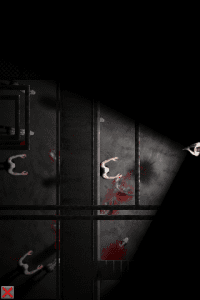 One was a lower budget, top down shooter for iOS that I wrote Episodes 2 and 3 for titled iZombie. The original episode lacked real story or character, so I was asked to improve on the story and character development for the next two episodic updates. The story is narrated by the main character and is limited to one screen of a hundred and fifty characters per episode. Creating interesting character development and also conveying key plot elements in such a confined space is extremely tough. After a lot of revisions and selective use of vocabulary, the main character took on a personality and tone that made him unique. He reminds me a little of Rorschach from Watchmen. The whole experience really forced me to approach my style of writing differently.
One was a lower budget, top down shooter for iOS that I wrote Episodes 2 and 3 for titled iZombie. The original episode lacked real story or character, so I was asked to improve on the story and character development for the next two episodic updates. The story is narrated by the main character and is limited to one screen of a hundred and fifty characters per episode. Creating interesting character development and also conveying key plot elements in such a confined space is extremely tough. After a lot of revisions and selective use of vocabulary, the main character took on a personality and tone that made him unique. He reminds me a little of Rorschach from Watchmen. The whole experience really forced me to approach my style of writing differently.
The second was a huge budget, AAA, MMO, with a great third person shooter mechanic, set in a post apocalyptic, futuristic world where street gangs ran everything. The game concept had many great opportunities for storytelling, interesting characters and dialogue but took advantage of none of these elements. The back story was a complete oversight to the executive members of the production team and was strapped on at the end of development. After an uneventful launch and a slew of bad reviews the game was eventually updated with additional “story” content but at a huge expense. Even with the huge budget the story was overlooked and the game suffered because of it.
To answer your question planning, flexibility as well as ingenuity are paramount when writing for games and will only help you and your project to succeed.
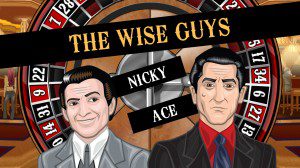 Chellemo (ROG): What are the tools available for organizing dialogue content on the market today? Which do you use/prefer?
Chellemo (ROG): What are the tools available for organizing dialogue content on the market today? Which do you use/prefer?
John Karnay: Most tools are proprietary in nature, which means that they are specific for the games they were created for. I have worked with the Aurora tool set developed by Bioware for their NWN 2 engine. While it is a fantastic tool set, it is more geared toward level design and mission design than towards game writing. Most companies use common editing programs such as Excel, Visio, Word, and Notepad + as a means to record dialogue. This is usually dependent on how they plan to import that script data into their game engines. For Crazy Night Out, we used a proprietary CMS importer that parsed formatted text files into our CMS. While this process worked well at the time, it had some drawbacks. As a producer as well as writer, I would ideally like a one stop program that could serve as a text editor, branching flow chart, as well as wrangle assets and required artwork for each portion of the script. Ideally it would also export the scripts into a universally acceptable format for use on multiple platforms.
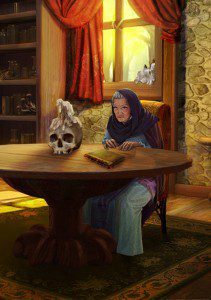 Chellemo (ROG): How could the upcoming articy:draft story writing software change how game writing is done in the future? What does it offer that is not available in other writing tools?
Chellemo (ROG): How could the upcoming articy:draft story writing software change how game writing is done in the future? What does it offer that is not available in other writing tools?
John Karnay: As I mentioned before, the ideal would be to have an all encompassing program that could manage art requirements, development tasks as well as branching, dialogue and characters. Basically it would be a living story board that could serve as a creative target for the entire team. From what I have seen of the program, articy:draft has included most of these features into their product. It looks incredibly promising and I look forward to the Beta. It helps to link the creative process between the designers, producers, writers and developers so that the entire team is on the same page and of the same vision for the project at any point in the development cycle. I have a lot of hope for this tool set and if it is half of what it claims we will probably be using it moving forward.
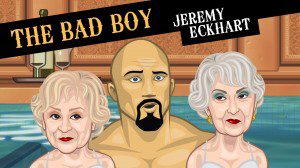 Chellemo (ROG): What’s your advice for anyone wanting to break into game writing? What qualifications make a potential employee more valuable to game studios?
Chellemo (ROG): What’s your advice for anyone wanting to break into game writing? What qualifications make a potential employee more valuable to game studios?
John Karnay: One thing I would greatly suggest is humility. I have seen too many students who would like to be members of the gaming industry, carrying enormous chips on their shoulders. Many vocalize how they have had their eyes opened to how “unfair” the industry can be to would be applicants. I always try to remind them that despite a game school degree or their good intentions, they are still inexperienced in the grand scheme of things and need to pay their dues.
Many feel that their degrees entitle them to immediate positions as game designers, level creators, quest writers or even as producers. While I would have killed to have the basic skill set foundation that many game schools offer, I always try to explain to students that just because you take Psychology 101 doesn’t make you a psychologist. A good portion of your ability will come from experience. Regardless of how many books you read or class projects you participate in, it is only scratching the surface of the experience required to work in a critical position in development environment. This is true for every aspect of the industry from art to design to programming.
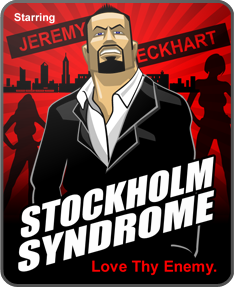 I strongly advise students to intern for a mid-sized game company or work as a QA tester. I stress having a strong foundation in the key management /office software like MS Office Suite, Project, Power Point, Balsamiq and also basic Photoshop skills. As an intern you maybe be shifted from one department, doing time consuming grunt work. Conduct yourself in a businesslike manner and have the basic skills needed to be organized and collect and edit data. QA can teach a lot about the development process as well as the reality of hard dates, feature cuts and also the ratio of quality to street date. I learned so much about the industry from my time spent in QA.
I strongly advise students to intern for a mid-sized game company or work as a QA tester. I stress having a strong foundation in the key management /office software like MS Office Suite, Project, Power Point, Balsamiq and also basic Photoshop skills. As an intern you maybe be shifted from one department, doing time consuming grunt work. Conduct yourself in a businesslike manner and have the basic skills needed to be organized and collect and edit data. QA can teach a lot about the development process as well as the reality of hard dates, feature cuts and also the ratio of quality to street date. I learned so much about the industry from my time spent in QA.
I would encourage new writers to not dwell strictly on game writing and to pursue other mediums to start with. Most companies will want to see some background in professional published writing. Comics and table top game supplements are a good start because they give you the foundations of game design, continuity, story boarding and smart dialogue usage. Most game companies will want to test your abilities in some way through one of their tool sets. Bioware and Blizzard will require you to use their tool sets for the test before they will even look at your resume or portfolio. Write as much as you can. Being prolific and razor sharp in your craft will always help you in the long run.
Thank you John for taking the time to talk with us. I personally have learned a lot about the things I need to do as I look into creating my own games. Something that really stuck with me is how important it is to find balance between the “larger than life idea” and the compelling story which is doable from the business perspective. That will be my challenge.
I encourage everyone to visit Crazy Night Out and play the free clickable demo. I enjoyed the humor and you’ll find more information about Sonic Boom Games and their projects here.
If anyone would like to follow John or Sonic Boom games on Twitter, his username is @Johnny_Utah . Sonic Boom’s official Twitter is @sonicboomgames . You can also follow one of the stars of the Crazy Night Out series, action star, ex-MMA Champ and Bad Boy of Hollywood and Vegas @JeremyEckhart.


